Powder Coating News
now browsing by category
Hot news ,developing ,technology of powder coating industry .
Flame retardant for powder coatings
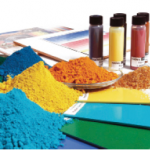
Flame retardant thermosetting powder coatings are mainly made by adding 1-10% of the total amount of flame retardant to conventional cyclopolymer powder coatings or polyester powder coatings, taking the flakes extruded from the extruder for direct combustion to determine the oxygen index, and evaluating it with reference to GB 2406-1993. And refer to GB 14907-2002 to determine the fire resistance. The conditions that flame retardants should have: High flame retardant efficiency, no or slightly lowering the original physical, mechanical andRead More …
Types of powder coating dispersants
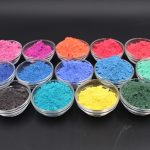
Powder coating dispersants are a type of dispersant used to assist pigments and fillers in powder coatings. Its function is to evenly disperse solid particles into liquid media to ensure that the powder coating has good rheology, stability and uniformity. There are many types of powder coating dispersants. Several commonly used powder coating dispersants are introduced below. Organic solvents: Organic solvents are a common powder coating dispersant. It can interact with powder particles to help disperse the particles. The selectionRead More …
Color difference standard of powder coating

The color difference standard of powder coating can be divided into two common standards, namely △E and NCS standards. △E is an international color difference standard, which indicates the color difference between different samples. The lower the color difference value, the smaller the color difference between samples and the more similar the colors. The NCS standard is a color standard system developed by the Swedish Color Association (The Natural Colour System). It divides colors into 6 basic colors and 15Read More …
Reasons for powder coating sagging
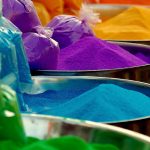
Powder coating sagging refers to the uneven flow of powder on the surface of the coated part during the coating process, forming a sag or sagging phenomenon. Sagging may cause problems such as uneven coating thickness and poor surface quality. The following are some reasons that may cause powder coating sagging: 1. Properties of powder coating: -High viscosity: High viscosity of powder coating may lead to poor fluidity and increase the risk of sagging. -Excessive particles: Excessive particles may makeRead More …
Powder coating density
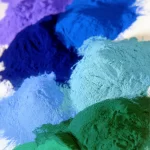
The density of powder coating depends on its composition and formulation. Generally speaking, the density of powder coating ranges from 1.2 to 1.8 g/cm3. The specific density may also be affected by factors such as particle size, shape and porosity. Further subdivided, the following are the density ranges of several common powder coatings: Pure polymer powder coating: Its density is usually between 1.2 and 1.5 g/cm3. This type of powder coating is mainly composed of pure polymers, such asRead More …
Application of powder coating additives
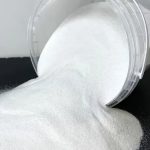
The effects of conventional additives are similar, and the formulas are basically the same. For example, the amount of leveling agent absorbed by epoxy resin is 4% to 5%, and the amount of leveling agent absorbed by silica, called through-flow, is 0.8% to 1.6%. For the dosage of resin and curing agent, first determine the content of the base material in the formula, and then calculate it according to the recommended ratio. Generally, the excess curing agent is 5-10%. SoRead More …
Classification of powder coating additives
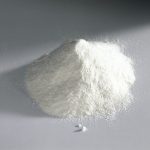
Powder additives are an important component of powder coatings and are necessary substances to improve the performance of powder coatings in certain aspects such as production, construction or coating film. Although the additive amount is much less than that of resin, curing agent and pigments and fillers, and the total amount is generally within 5%, its impact on the performance of powder coatings is extremely important. An excellent powder coating additive must meet the following conditions: small addition amountRead More …
Precautions when using powder coatings
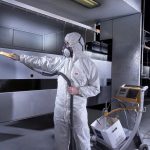
The storage temperature is below 24℃, in a low temperature and dry environment. Keep away from fire sources, avoid direct sunlight, and maintain good ventilation. Do not expose the conductive powder coating to the air at will after use. The bag should be covered or tightly closed at any time to prevent debris from being mixed in. All equipment used for painting must be properly grounded to eliminate static electricity. Avoid unwarranted discharge from the coating machine. In the powderRead More …
A brief introduction to marine coatings

What is marine paint? Marine paint is a special coating applied to the surface of ships. In addition to the beautification and protection functions of ordinary paints, ship paints also have special functions such as anti-corrosion, waterproofing, and enhanced hull strength. Ship paint is divided into interior and exterior topcoat and deck paint. Types of marine paint There are many types of ship paint, the common ones are single-component paint, two-component paint, acrylic paint, etc. Among them, two-component paint isRead More …
Selection of powder coatings for lamps
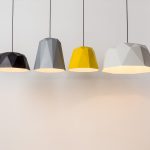
The choice of powder coating for lamps mainly depends on the environment and purpose of its use. Generally speaking, lamp powder coatings need to have good heat resistance, corrosion resistance and weather resistance to protect the lamps from damage from the external environment. Indoor lightingFor lamps used indoors, powder coatings with better decorative and protective properties are usually chosen. These coatings have good adhesion, hiding power and scrub resistance, and can provide good protection and decorative effects for lamps. OutdoorRead More …

 D5 Creation
D5 Creation